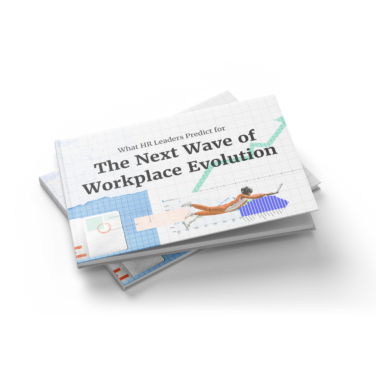Expanding into Singapore offers access to Asia’s fast-paced business scene—but its employee benefits system reflects a pro-business, efficiency-first ethos.
Globally, Singapore’s benefits regime is moderate to lenient. It's more structured than in many emerging markets, but far less expansive than the generous, state-backed systems in Europe. At its core is the Central Provident Fund (CPF), which provides predictable support for citizens and permanent residents across healthcare, housing, and retirement.
For employers, this means clarity, but also the responsibility to offer competitive perks, especially for foreign hires who don’t qualify for CPF.
In this guide, I’ll break down benefit eligibility, legal requirements, and popular perks in this island nation. I’ll also highlight top Employer of Record (EOR) services in Singapore to help you streamline compliance, reduce administrative complexity, and scale your team with confidence.
Who Qualifies for Statutory Benefits in Singapore?
Employees under formal employment contracts (full-time, part-time, or fixed-term) are generally covered under statutory benefit schemes.
Singapore Citizens and Permanent Residents (PRs) in this category are enrolled in the Central Provident Fund (CPF) scheme from their first day of employment, provided their monthly earnings exceed the CPF minimum threshold (currently SGD $50 per month for most contributions).
The CPF covers retirement savings, medical insurance (MediShield Life), and housing support, forming the backbone of Singapore’s social security system.
Who Is Excluded?
Not all workers qualify for CPF or other statutory entitlements. Key exceptions include:
- Freelancers and independent contractors: Not covered under CPF or statutory leave unless voluntarily contributing.
- Foreign employees: CPF does not apply to foreigners on work passes (e.g., EP, S Pass).
- Interns and temp agency workers: Eligibility varies by employment contract, duration, and whether the role is considered part of formal employment.
- Employees earning below CPF thresholds: May receive reduced or no CPF contributions, though they may still receive other statutory entitlements (e.g., sick leave, public holidays).
For the most up-to-date eligibility requirements, refer to Singapore’s Ministry of Manpower (MOM) guidelines.
Statutory Employee Benefits in Singapore
Meeting statutory benefit obligations isn’t optional—it’s the baseline for compliance and employee security. Here’s what you need to account for when hiring in Singapore.
Central Provident Fund (CPF)
For Singapore Citizens and Permanent Residents (PRs), CPF contributions are mandatory. This tri-purpose fund covers retirement savings, healthcare (via MediSave), and housing. Both employer and employee contribute, with rates tied to age and income. Foreign employees on work passes aren’t eligible for CPF, so benefits for them must be structured differently.
Paid Annual Leave
Employees who’ve worked at least three months are entitled to 7–14 days of paid annual leave, depending on tenure. While that’s the minimum, many employers offer more to remain competitive and support long-term retention.
Paid Sick Leave
Employees with three months of service are eligible for 14 days of outpatient sick leave and up to 60 days of hospitalization leave each year—with a valid medical certificate. This ensures health recovery without financial stress and prevents presenteeism from undermining team well-being.
Maternity Leave
Eligible female employees can receive 16 weeks of paid maternity leave, funded partially or fully by the government depending on factors like citizenship and birth order. This policy reflects Singapore’s push toward inclusive, family-friendly workplaces.
Paternity Leave
New fathers are entitled to two weeks of government-paid paternity leave. Some employers choose to top this up or offer flexible options to encourage caregiving involvement from day one.
Public Holiday Pay
Employees are entitled to 11 paid public holidays annually. If someone works on a holiday, you’ll need to offer a substitute day off or pay an extra day’s wages.
Work Injury Compensation & Safety
Employers must insure all employees under the Work Injury Compensation Act. This law allows injured workers to claim for medical expenses, income loss, or permanent disability—without needing to prove employer fault. It’s a critical risk-mitigation measure for any workplace.
Leave Entitlements in Singapore
Singapore enforces robust leave policies to protect employee well-being and provide flexibility for personal and family obligations:
- Annual Leave: 7–14 days based on tenure, with some employers offering more as a retention incentive.
- Public Holidays: 11 paid days, with mandatory compensation if employees are required to work.
- Sick Leave: 14 outpatient days, 60 hospitalization days—helps prevent presenteeism and ensures proper recovery.
- Maternity Leave: 16 weeks, including provisions for unmarried mothers under specific conditions.
- Paternity Leave: 2 weeks, encouraging gender equality in caregiving.
- Parental/Childcare Leave: Includes unpaid infant care leave and 6 days of childcare leave for parents of children under 7, reinforcing work-life harmony and addressing the needs of employees with dependents.
These policies foster a culture of trust and support, enabling stronger engagement and long-term retention.
Common and Additional Employee Benefits in Singapore
Statutory requirements are the baseline. But to attract and retain top talent, especially in tech, finance, or multinational sectors, employers in Singapore are stepping up with additional perks:
- Private Pension Plans: Especially valuable for expatriates who aren’t covered by CPF, or for senior employees looking to boost their retirement planning.
- Supplemental Health Coverage: Medical, dental, and vision insurance (beyond what CPF and MediSave offer) is increasingly expected, particularly for international talent.
- Life & Critical Illness Insurance: Often bundled with medical packages, these help support dependents and provide peace of mind.
- Tech & Mobility Perks: Company laptops, phones, and transport allowances are standard in many competitive sectors, reflecting a commitment to enablement.
- 13th Month & Holiday Bonuses: Widely practiced in the private sector, these annual bonuses help with year-end expenses and signal shared success.
- Vacation Bonuses: A growing trend to encourage actual time off, reward loyalty, and reduce burnout.
- Wellness Perks: From gym subsidies to mental health stipends and counseling access, wellness benefits are no longer “nice to have”, they’re a retention lever.
These extras don’t just pad the offer letter—they shape how your people feel day-to-day. For HR leaders, they’re your culture in action.
Benefits That Attract Top Talent in Singapore
In a market where skilled talent has options, the most effective benefits go beyond check-the-box compliance, they signal that you actually understand what today’s workforce values. Forward-looking organizations in Singapore are adapting by investing in perks that are personal, flexible, and future-focused.
- Skills-Based Hiring & Growth-Driven L&D: Offer real career mobility through micro-learning platforms, on-demand courses, and mentorship programs. People want growth, and they’ll stay where they can see it.
- Flexible Work Models: Flexibility isn’t a perk anymore, it’s a baseline. Support staggered hours, hybrid work, and fully remote setups to meet people where they are.
- Wellness & Mental Health Support: Monthly wellness stipends, counseling subsidies, and mental health apps are becoming standard in high-performing teams. They’re a proven lever for reducing burnout and building loyalty.
- Remote Work Stipends & Learning Credits: Help your people thrive at home and online. Cover home office equipment, high-speed internet, or provide annual learning budgets for certifications and personal development.
- Custom Compensation Packages: Go beyond salary. Tailor packages with top-up insurance, CPF enhancements, and tax-friendly reimbursement schemes that reflect life stage and role.
When your benefits strategy aligns with how people actually live and work, engagement follows—and so does retention.
How to Set Up and Manage Employee Benefits in Singapore
Rolling out a benefits program in Singapore isn’t just about checking boxes, it’s about building trust, staying compliant, and staying competitive. Here’s how to do it right:
- Partner with Local Providers: Collaborate with insurers, wellness vendors, and payroll providers who understand Singapore's regulatory context.
- Ensure Compliance: Keep an eye on updates from the Ministry of Manpower (MOM) and the CPF Board. Employment laws evolve, and your policies should too.
- Communicate Clearly: Use digital handbooks, onboarding sessions, and Q&A forums to increase awareness and uptake.
- Monitor & Adjust: Conduct pulse surveys and benchmarking studies to adapt to changing employee expectations.
- Consider an EOR Partner: If you're hiring without a local entity, an EOR in Singapore can take care of CPF contributions, payroll, leave management, and compliance—so you can focus on growth, not admin.
Stay Compliant with Local Employment Laws
Singapore’s employment laws are clear, but not forgiving. Get it wrong, and you’re looking at fines, back-pay, or worse, reputational risk. Here’s what to keep top of mind:
- Misclassifying Workers: Treating a contractor like a full-time employee (or vice versa) can open the door to backdated CPF liabilities, statutory benefit claims, and audits you don’t want.
- Missing CPF or SDL Contributions: CPF (Central Provident Fund) and SDL (Skills Development Levy) aren’t optional. Late or missed payments can trigger financial penalties and damaged trust with your team.
- Overlooking Health & Safety Requirements: Under Singapore’s Workplace Safety and Health Act, failure to maintain a safe environment can lead to legal liability if employees fall ill or get injured on the job.
It’s essential to document every employment contract, ensure clarity on CPF obligations and CPF contribution tiers, and consult the MOM's employer guidelines for updates.
Get Support Setting Up Benefits in Singapore
Benefits design in Singapore is a strategic lever. Tailor offerings that resonate with your workforce while fulfilling all legal obligations. An EOR can support you in:
- Navigating complex CPF contribution requirements
- Simplifying SDL and FWL tracking
- Delivering local expertise with global reach
Don't let operational complexity slow your growth. Explore the best EOR providers in Singapore to get compliant, competitive, and confidently hiring in-market.
10 Best Singaporean Employer of Record Service Shortlist
Here's my pick of the 10 best software from the 10 tools reviewed.
What’s Next?
To stay ahead in people management, subscribe to our weekly HR newsletter for insights, strategies, and tools designed for CHROs and people leaders.





